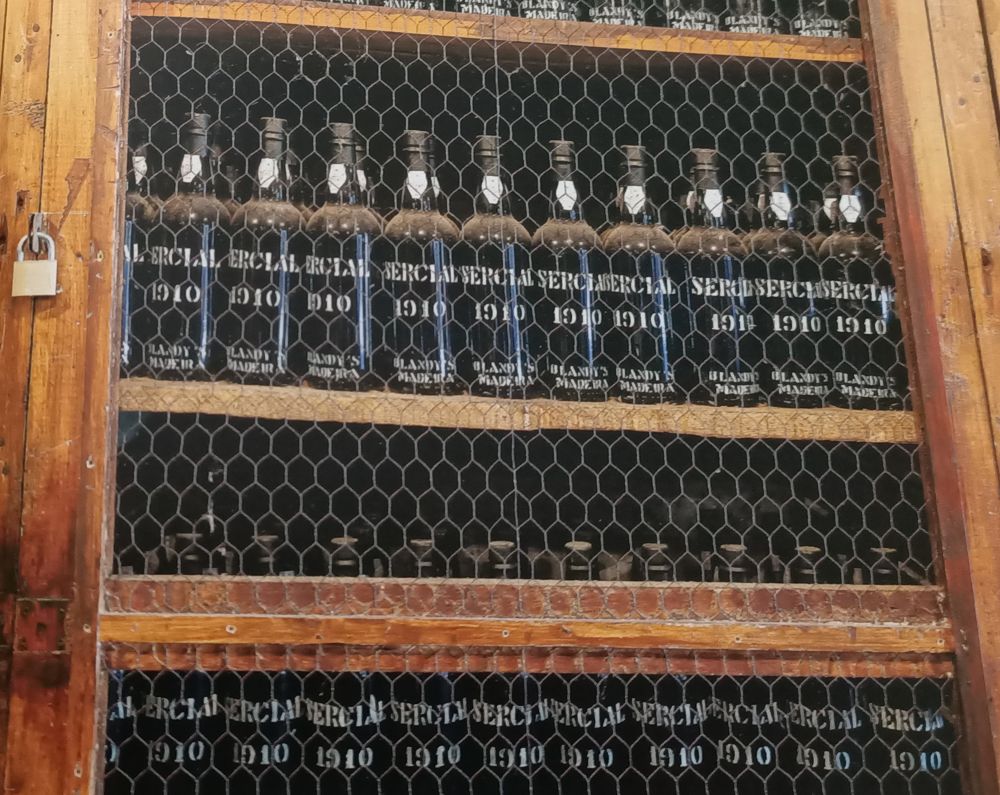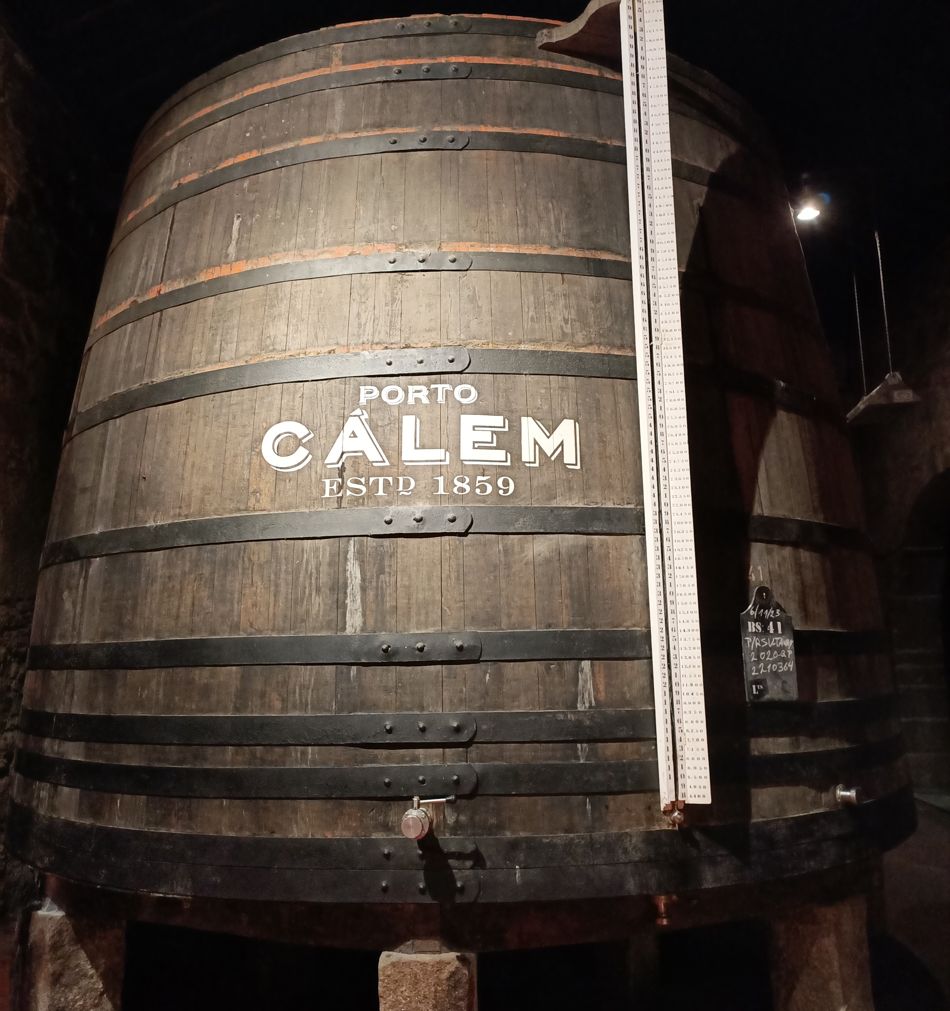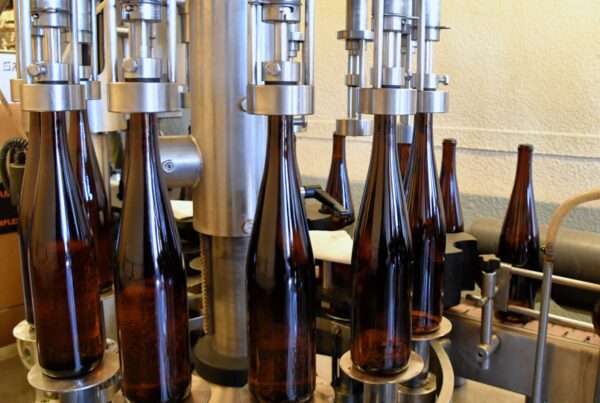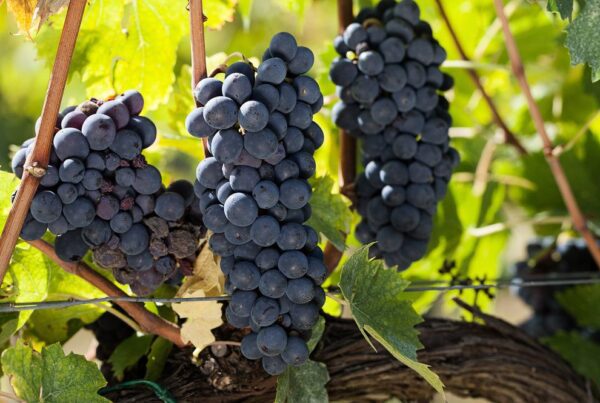Port and Madeira are both delicious fortified wines.
They have much in common, but they are also both unique wines that come in a variety of styles and flavors.
In this article, you will learn both the similarities and the key differences between Port and Madeira wine.
Key takeaways:
- Both Port and Madeira are fortified wines with protected status – each can only be made according to strict rules and laws.
- They are made with different grapes and winemaking techniques. Each is made in a range of styles, colors and flavors.
Before we delve into the similarities and differences between Port and Madeira, let’s first establish what they both are.

Contents
What is Port wine?
Port is a fortified wine made from a blend of black grapes varieties. A small amount of White Port is also made from white grape varieties.
Fortified wines are wines that have additional alcohol added.
A grape-derived spirit is added to partially fermented grape juice. The alcohol in the spirit kills off the yeasts and stops the fermentation. The result is a sweet wine that is high in alcohol.
There are different styles of Port wine that come in a variety of colors and flavors.
What is Madeira wine?
Madeira is a fortified wine produced and bottled in Madeira–a Portuguese island off the coast of Morocco–using specific grape varieties.
It is aged by a unique ancient heating system.
Madeira is produced in a variety of styles ranging from dry to sweet.

Similarities between Port and Madeira
- Both fortified wines: Port and Madeira are both fortified wines (wine with grape spirit added to it).
- Protected Status: Both Port and Madeira have Protected Designation of Origin (PDO) status. This means that there are rules and laws that say something can only come from a specific place. In this case, Port can only be made in the Duoro Region in Portugal and Madeira from the island of Madeira.
- Range of styles: Both Port and Madeira are made in a range of different styles depending on how they are made.
- Unique winemaking methods: Both Port and Madeira have traditional and unique winemaking methods that make each special (see below).
- Similar flavors: Tawny Port and Madeira wine both have oxidative aromas and flavors (dried fruit, nuts, spices).
Key differences between Port and Madeira wine
| Characteristic | Port | Madeira |
| Color | Ruby, tawny to brown; pink (rosé); straw, golden, amber (white) | Gold, amber, brown, dark brown, depending on the style |
| Flavors | Varies depending on style | Varies depending on style |
| Sweetness | Sweet (White Ports sweetness levels vary) | Dry through to sweet, depending on the style |
| Alcohol percentage | Between 19-22% abv | Between 17.5-21% abv depending on the style |
| Ageing methods | Large oak casks (Ruby), bottle ageing (Vintage), oxidative ageing in pipas (Tawny) | Estufagem and Canteiro methods |
| Ready to drink | Yes (Vintage benefits from ageing) | Yes (majority of wines) |
| Grapes | Black grapes (white for White Port) | White and black grapes |
| Soil | Schist bedrock | Basalt bedrock |
| Grape spirit | Up to 77% abv | 96% abv |
| PDO | Yes | Yes |

Different terroir
Soil and weather conditions influence the flavor of grapes and therefore the wine. Madeira and Port are grown in very different conditions.
Port vineyards are located on steep slopes. The schist bedrock permits grapes to grow in poor soil. The schist retains and distributes water that collects in the numerous fissures and seeps through to great depts, ensuring the vine roots develop downward.
The schist rock also absorbs heat from the sun during the day and release it at night, keeping the vines warm.
Grapes for Madeira are grown in a maritime climate with high rainfall and some tropical influences.
Like Port wine, grapes for Madeira wine are grown on steep manmade terraces.
Madeira is a volcanic island and the vineyards are planted on a basalt bedrock. Basalt rock is rich in magnesium and iron.
Different grape varieties
Port is made using a complex blend of several black grape varieties (except White Port which is made with white grapes).
There are approximately 30 different traditional grape varieties that Port wine can be made with. Many are thick-skinned grapes that give Port wine its deep color and structure.
Six of the most commonly used grapes in Port production are:
- Touriga Franca
- Touriga Nacional
- Tinta Barroca
- Tinta Roriz
- Tinto Cao
- Tinta Amarela
Each variety contributes its own distinctive character to the wine and thrive under specific growing conditions.
The combination of different varieties gives Port both complexity and harmony.
Madeira is made from both white and red grapes, and unlike Port wine it is typically mono-varietal wine (made from one grape variety).
Tinta Negra grapes are used to make a classic red variety of Madeira.
Commonly used white varieties include:
- Sercial
- Terrantez
- Verdelho
- Boal
- Malvasia
Different alcohol content
Port wine is between 19-22% ABV.
Madeira wine is between 17.5-21% ABV.
Different levels of fortification
Fortification of the base wine with grape spirit stops the fermentation process and increases the alcohol levels.
Port wine is fortified using a grape spirit that can be up to 77% abv.
Madeira wine is fortified with a grape spirit that is 96% abv.
Different Fermentation/extraction techniques
Port has a short but intense fermentation period. Vigorous extraction techniques, such as foot treading, are used to extract as much color, flavor and tannins as possible in this short period of time.
Madeira is made using various extraction techniques and periods of fermentation depending on the desired style of wine.
Tinta Negra grapes, for example, used to produce dry and medium dry wines aren’t subject to maceration, whereas medium rich and rich wines use maceration and auto-vinification techniques.
All white varietals are subject to maceration in order to gain the maximum extract from the grapes.
Different Maturation/ageing methods
Port wine is aged in two ways:
Ruby Port ageing
Ruby Ports are aged in large vats with minimal contact with wood and oxygen.
The wine is aged in the vats for different periods of time, depending on what type of Port the winemaker wants to create.
The flavors of Ruby Port develop and change as it ages. Young Ruby Port has primary fruit flavors such as red and black berries, as well as chocolate and spices like cinnamon.
Wines that have aged for longer develop tertiary flavors, such as cooked fruit, prune and leather notes.

Tawny Port ageing
Tawny Port is aged in small barrels, called “pipas” that are part-filled with wine. They pipas are approximately 5/6 full, ensuring the wine is in contact with oxygen.
It is this contact with the oxygen and wood that creates the oxidative notes in Tawny Port, as well as its color, which can range from Tawny (brownish) to brown color.
The longer a Tawny Port is aged, the darker and browner the color will be.
The smaller surface area of the pipas also ensures more contact with wood than in a large vat. This contact with the wood also influences and changes the flavors and color of the wine.
As Tawny Ports age the fruit flavors fade and transform into dried fruit flavors, such as raisins and prunes. Tawny Ports also have notes of walnut, chocolate, coffee and caramel.

Madeira wine has different ageing methods to Port wine.
It is aged in two ways:
The Estufagem method
After the grapes are fermented and fortified, Madeira wine is transferred to large tanks and gently warmed up to temperatures of 45°C over a period of 4 months.
After 4 months, the wine is gradually cooled and then left to age for 2 years in Brazilian satinwood vats.
This process is usually only used with the Tinta Negra grape in the production of 3-year-old wines.
The Canteiro method
The word “canteiro” comes from the name of the traditional supporting beams on which the oak casks are placed.
The wines are aged in casks for a minimum of 4 years under the rafters of warm attics, exposed to the natural warmth of the sun which gently heats the wine.
Wines produced in the “canteiro” system are stored in casks by the variety name and vintage year.
As the casks are gently warmed by the natural occurring heat of the sub-tropical climate, the wines acquire a unique and concentrated character.
Like Tawny Port, the casks are never 100% full, allowing the wine to slowly oxidize and transform the primary aromas into tertiary aromas of spices, roasted nuts, dried fruits and smoke.
After a few years on the highest and warmest level, the wines are moved down to successively lower floors and cooler levels.
As the years pass, the wines eventually reach the ground floor to finish ageing.
The Canteiro method is used to produce premium wines.
Read with confidence: I am a certified wine expert (WSET L3).





